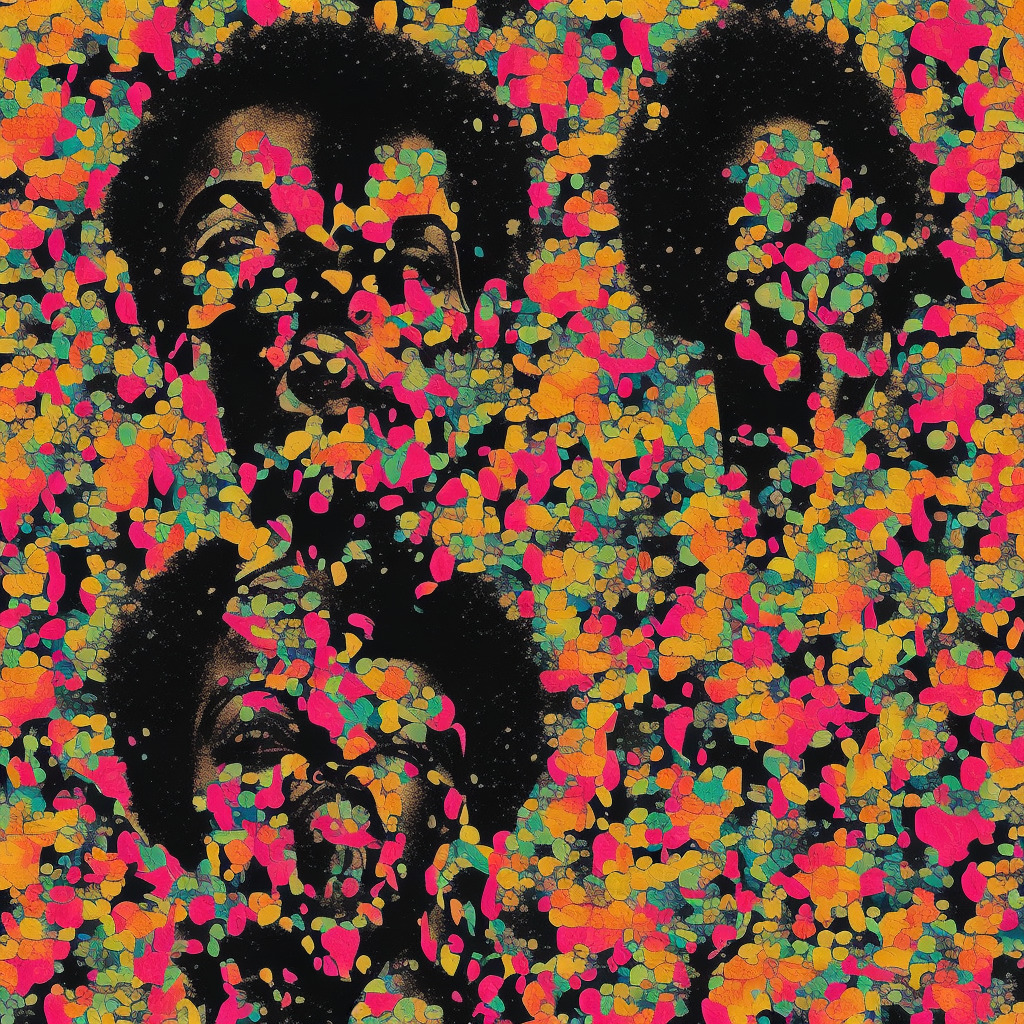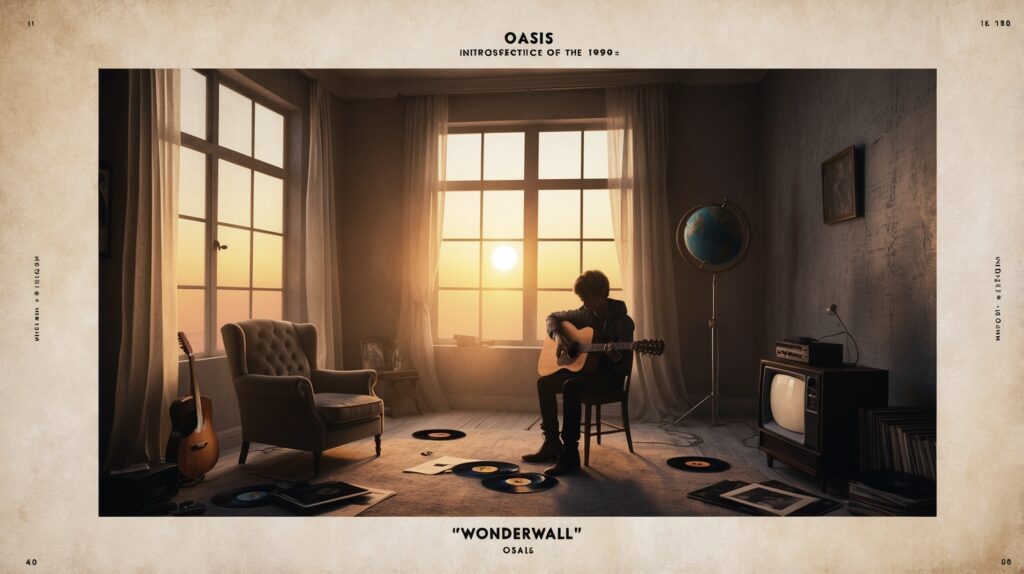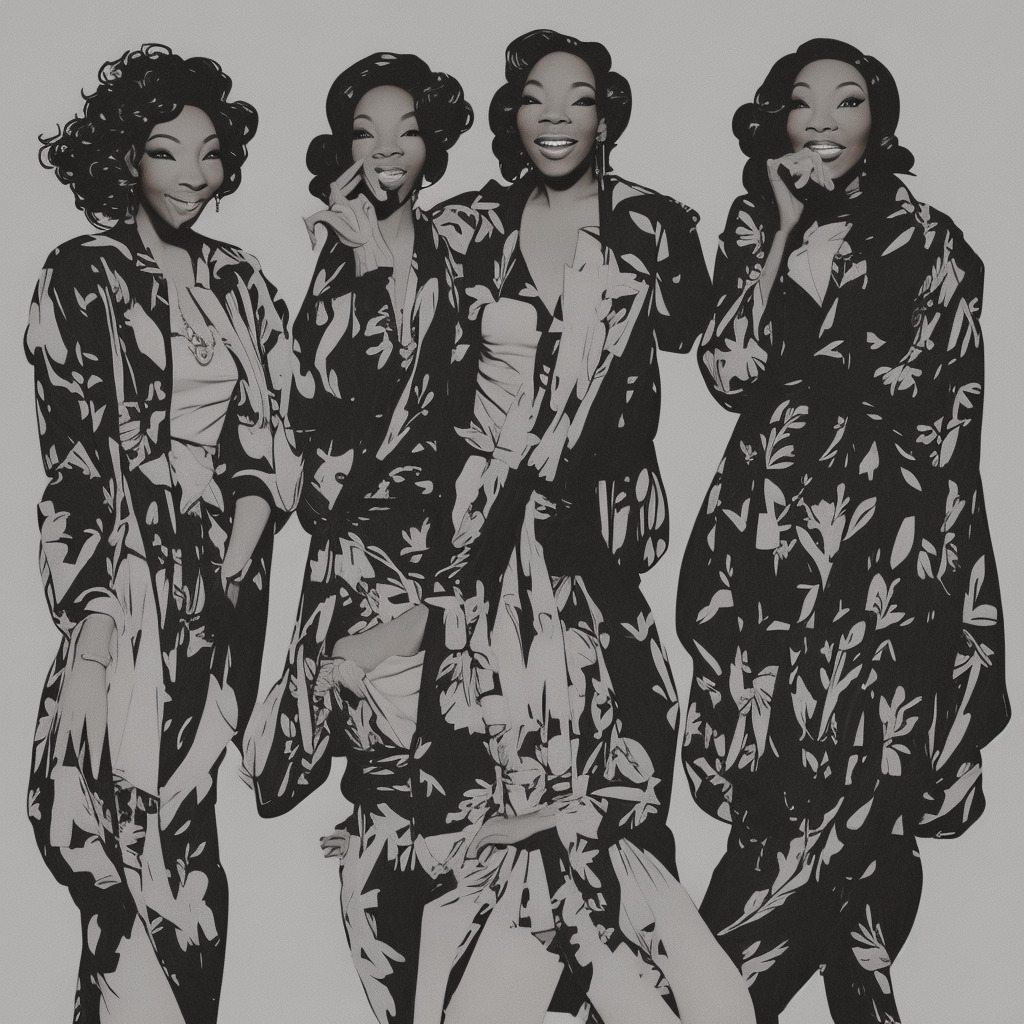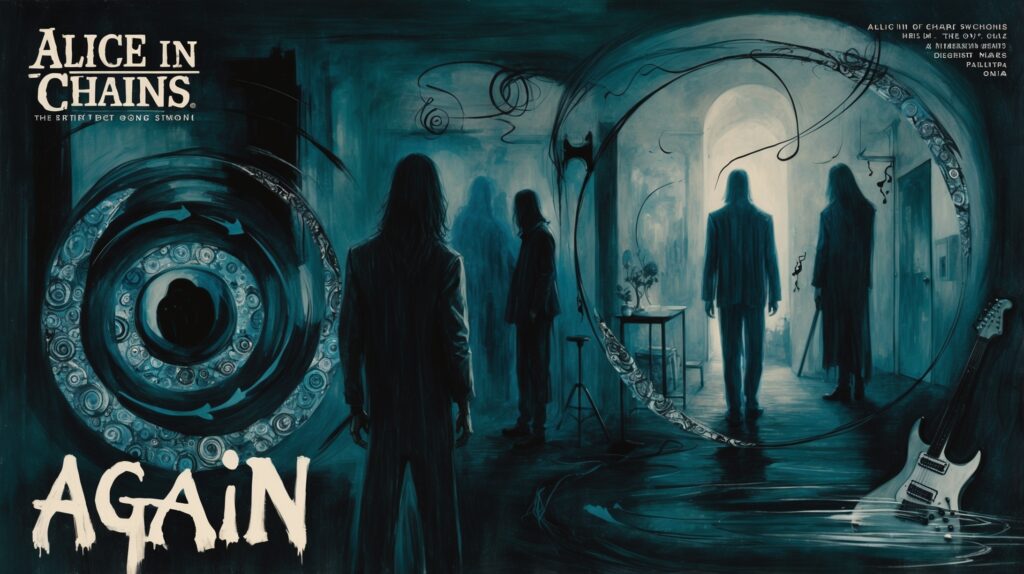? Did you know #LaurynHill’s iconic “Doo Wop (That Thing)” was inspired by 60s harmonies & street corners? ? Her smooth blend of soul, hip-hop & R&B keeps us groovin’ for 23 yrs! ?? #QueenLauryn #FunFact #TimelessTune ? Read about it: tinyurl.com/y6amvh8v
Revolutionizing the Music Scene: A Look Back at Lauryn Hill’s Impact
Lauryn Hill: Unforgettable trailblazer with a tumultuous career, forever influencing the music world through genre-defying hits and powerful messages.
When you think of artists who have truly made their mark on the music industry, Lauryn Hill undoubtedly stands out. Bursting onto the scene as part of the Fugees, a hip-hop group that gained critical acclaim in the mid-1990s, Hill quickly showcased her unique talent as a singer, rapper, and lyricist. However, it was her solo career that truly skyrocketed her to stardom and solidified her position as a trailblazer in music history.
One of Lauryn Hill’s most iconic songs, “Doo Wop (That Thing)” from her debut solo album “The Miseducation of Lauryn Hill,” encapsulates what made the artist so special. Released in 1998, the song beautifully melds together elements of hip-hop, R&B, and classic doo-wop, creating an unforgettable sound that still resonates today. In “Doo Wop (That Thing),” Hill delivers powerful, thought-provoking lyrics addressing the struggles faced by both men and women in relationships, emphasizing the importance of self-respect and self-worth.
Though Hill’s talent is undeniable, her career has been marked by controversy and inconsistency, making her one of the most enigmatic figures in music. Following the massive success of “The Miseducation of Lauryn Hill,” which went on to win five Grammy Awards in 1999, including Album of the Year, Best R&B Album, Best Female R&B Vocal Performance, Best R&B Song, and Best New Artist, Hill’s output has been sporadic at best. Her highly anticipated sophomore album has yet to materialize, leaving fans wondering what could have been.
While her studio discography may be sparse, Lauryn Hill’s impact on the music industry is monumental. “Doo Wop (That Thing)” spent three weeks at the top of the Billboard Hot 100, making her the first woman since Debbie Gibson to have a number one debut single. The song’s success marked a turning point for female rappers and paved the way for future artists to experiment with blending genres and bending the rules. “The Miseducation of Lauryn Hill” is often cited as a seminal album, influencing performers like Kanye West, Adele, and Amy Winehouse.
In conclusion, there’s no denying Lauryn Hill’s immense talent and the impact she has had on the music landscape. However, her career has been filled with ups and downs, making her an enigmatic figure in the industry. Regardless, timeless tracks like “Doo Wop (That Thing)” continue to be celebrated and appreciated by fans of all ages, proving that Lauryn Hill’s legacy will not be forgotten.
Chart-Topping Success: A Closer Look
Hill’s History-Making Hit: “Doo Wop (That Thing)” dominates charts, breaks records, and cements Lauryn’s legendary status.
“Doo Wop (That Thing)” made an incredible splash on the charts upon its release on July 7, 1998. The song, serving as the lead single from Lauryn Hill’s debut solo album “The Miseducation of Lauryn Hill”, rapidly climbed the charts, showcasing her undeniable talent and star power.
The song debuted at an impressive number one on the US Billboard Hot 100 chart, making Lauryn Hill the first female artist to achieve this feat with her debut solo single. Not only did it showcase her chart-topping abilities, but it also solidified her status as a trailblazer in the music industry. Furthermore, “Doo Wop (That Thing)” managed to hold onto the number one spot for two consecutive weeks, proving its staying power among listeners.
The success didn’t stop there, as the song also peaked at number two on the Billboard Hot R&B/Hip-Hop Songs chart. Internationally, it enjoyed significant traction, reaching the top ten in multiple countries including the UK, where it peaked at number three on the UK Singles Chart.
One interesting bit of chart trivia is that “Doo Wop (That Thing)” shares the distinction of being one of the songs to debut at number one on the Billboard Hot 100 with only a handful of other tracks in music history—a testament to its widespread appeal and instant popularity.
The song’s success undoubtedly played a major role in propelling “The Miseducation of Lauryn Hill” to its multi-platinum status and securing its place as one of the most iconic albums of the late 90s. With its combination of timeless lyrics and infectious melody, “Doo Wop (That Thing)” remains a classic example of Lauryn Hill’s extraordinary artistry and the enduring power of great music.
Dissecting the Soulful Lyrics of a Timeless Classic
Yo, remember back on the boogie when cats used to harmonize like
“Shoo-bee-doo-wop-shoo-be-day”
Yo, remember back on the boogie when cats used to harmonize like
“Shoo-bee-doo-wop-shoo-be-day”
Yo, remember back on the boogie when cats used to harmonize like
“Shoo-bee-doo-wop-shoo-be-day”
It’s been three weeks since you were looking for your friend
The one you let hit it and never called you again
“Remember when he told you he was ’bout the Benjamins?
You act like you ain’t here him, and raise it a degree
For every girl, they are gonna be right and it was well said
Left on read, the sun don’t shine, then it don’t shine, baby
Yeah, check it out, for you see
Really can’t complain, everything is kosher
Two thumbs up, Ebert and Roeper
I got the girl but if I didn’t, still be trying
Lady, don’t you know these lyrics is just fine
That thing, that thing, that thing
That thing, that thing, that thing
That thing, that thing, that thing
That thing, that thing, that thing
“Doo Wop (That Thing)” by Lauryn Hill, released in 1998, is a song that blends R&B, soul, and hip-hop elements to create a harmonious and powerful message. The lyrics of the song touch on themes of love, relationships, and the importance of self-respect, reflecting the spirit of the time in which it was written.
In the late 1990s, the world was experiencing significant changes – the end of the Cold War era, the rise of the internet, and the beginning of a new millennium. The music industry was also evolving, with hip-hop and R&B becoming increasingly popular and influential. Lauryn Hill, as a solo artist and as part of the Fugees, was at the forefront of this movement, and “Doo Wop (That Thing)” showcases her ability to weave personal and political themes into her music.
The lyrics serve as a cautionary tale for both men and women in relationships, urging them to be aware of the motives of others and to maintain their self-worth. Lines like “Remember when he told you he was ’bout the Benjamins? / You act like you ain’t hear him, and raise it a degree” and “Really can’t complain, everything is kosher / Two thumbs up, Ebert and Roeper” are cleverly crafted, delivering a message that remains relevant and powerful more than two decades later.
In conclusion, “Doo Wop (That Thing)” is a timeless song that perfectly captures the spirit of the era in which it was written. Lauryn Hill’s lyrics are a testament to her incredible talent as a songwriter, touching on important themes that still resonate with listeners today.
A Visual Tribute to Classic and Contemporary Harlem
Lauryn Hill’s “Doo Wop (That Thing)” music video brilliantly fuses past and present Harlem, creating a timeless, visually striking masterpiece that resonates with the song’s powerful message.
The music video for Lauryn Hill’s iconic single, “Doo Wop (That Thing),” masterfully pairs the song’s rich lyrical content with a visual representation that pays homage to the past while also embracing the present. Directed by the talented duo of Malik Hassan Sayeed and Lauryn Hill herself, the production illustrates a trip back in time, transporting its viewers to the streets of Harlem in the 1960s, and juxtaposing it with a modern Harlem setting.
Showcasing the neighborhood’s unique energy and spirit, the video brings to life the two worlds through a split-screen technique, a creative decision that brilliantly highlights the timelessness of the issues Lauryn Hill addresses in the song. The video’s budget was estimated to be around $500,000, which was quite substantial for the time, but the result was an unforgettable visual experience for fans and viewers alike.
Both sides of the screen feature Lauryn Hill performing the song on a bustling street corner, surrounded by the vibrant characters that make up the neighborhood fabric. The 1960s side is adorned with captivating vintage cars, fashion, and hairstyles, while the contemporary side exhibits the distinct 90s street style that defined the era. This visual representation emphasizes the song’s overarching message that, despite the passing of time, there is a need to respect oneself and understand the importance of maintaining one’s values.
In addition to the captivating visuals and the seamless integration of the past and present, the video also includes several hidden gems and Easter eggs for fans to enjoy. One of the most notable is the appearance of a young John Forté, who later gained prominence as a Grammy-nominated singer, songwriter, and producer. Additionally, in the 1960s scene, Lauryn Hill performs on a stoop with a street sign reading “Reciprocity Street,” a nod to the song’s lyrics.
The “Doo Wop (That Thing)” music video is a testament to Lauryn Hill’s artistic vision and dedication to creating a visual representation that not only complements the song’s message but also manages to make a statement on its own. With its compelling visuals, innovative split-screen technique, and an unforgettable trip to classic and contemporary Harlem, the video has undoubtedly become a timeless piece of art within the music world.
The Mastermind Behind “Doo Wop (That Thing)”
The marvelous composer of “Doo Wop (That Thing)” is none other than the multi-talented Lauryn Hill herself. Hill, a former member of the iconic hip-hop group Fugees, ventured into her solo career with the release of her ground-breaking album “The Miseducation of Lauryn Hill” in 1998. This album, which houses the catchy “Doo Wop (That Thing)”, also boasts other remarkable hits such as “Ex-Factor”, “Everything Is Everything”, and the soul-stirring “To Zion”.
Besides her success with Fugees’ “The Score”, Hill has continued to showcase her composing prowess, earning her multiple accolades, nominations, and awards over the years. Her music seamlessly blends elements of R&B, hip-hop, and neo-soul, creating a unique and captivating sound that has left an indelible mark on contemporary music.
Awards, Accolades, and Influences
Lauryn Hill’s trailblazing “Doo Wop (That Thing)” conquers charts, captures Grammys, and ignites a lasting legacy of inspiration for artists worldwide.
“Doo Wop (That Thing)” took the music world by storm upon its release in 1998. As the lead single from Lauryn Hill’s critically acclaimed solo debut album, “The Miseducation of Lauryn Hill,” the song quickly became a hit and garnered numerous awards and accolades. Among its impressive achievements, “Doo Wop (That Thing)” reached the #1 spot on the Billboard Hot 100 chart in the United States, making Hill the first female hip-hop artist to achieve this feat.
The song also earned Hill two prestigious Grammy Awards in 1999, taking home the honors for Best Female R&B Vocal Performance and Best R&B Song. Additionally, “Doo Wop (That Thing)” was nominated for Record of the Year, a testament to the track’s widespread recognition and impact. In 2018, “The Miseducation of Lauryn Hill” was included in the National Recording Registry by the Library of Congress, signifying the album’s cultural, historical, and aesthetic significance.
“Doo Wop (That Thing)” has also made appearances in various forms of media over the years. The song was featured in the 1999 film “The Best Man” and the 2002 TV series “American Dreams.” Additionally, it has been included in several popular video games, such as “Dance Central 3” and “Lips: Number One Hits.”
The song’s influence on other artists is undeniable, as many have covered and reinterpreted “Doo Wop (That Thing)” in their own unique styles. Notable cover versions include renditions by singer-songwriter Amy Winehouse, who performed a live mashup of the track with her own song “He Can Only Hold Her” during her 2007 concerts, and British artist Little Simz, who released her version on the 2015 mixtape titled “Age 101: Drop X.” Additionally, “Doo Wop (That Thing)” has been sampled by numerous artists, such as Drake, who incorporated elements of the song in his 2018 hit “Nice for What.”
Through its multitude of awards, media appearances, and influence on other artists, “Doo Wop (That Thing)” has secured its place as a timeless classic in the world of music. Lauryn Hill’s powerful songwriting and vocal talents continue to inspire new generations of musicians, ensuring the track’s legacy will endure for years to come.
Breaking Down the Musical Components
“Doo Wop (That Thing)” has a timeless appeal that is largely due to its intricate musical structure. Lauryn Hill masterfully combines elements of classic doo-wop and contemporary R&B, resulting in a song that feels both nostalgic and fresh. Let’s dive into the technical aspects of the song’s composition, which contributes to its enduring popularity.
The track is written in the key of G Major, with a chord structure that revolves around the I-IV-V progression, consisting of the chords G, C, and D. This progression is a staple in doo-wop music and helps cultivate the song’s vintage feel. Interestingly, Lauryn Hill has also incorporated minor chords, such as the ii (A minor) and vi (E minor) chords, adding depth and complexity to the harmonic structure.
As for the tempo, “Doo Wop (That Thing)” clocks in at a moderate 100 beats per minute (BPM), which is a common tempo for R&B and hip-hop tracks. This mid-tempo pace allows the listener to both groove and appreciate the lyrical content without feeling overwhelmed. The song also features a swing rhythm, which is characteristic of doo-wop and further enhances the throwback vibe of the track.
One of the most notable aspects of “Doo Wop (That Thing)” is its use of vocal harmony. Lauryn Hill’s vocal arrangements are expertly crafted, utilizing both tight and wide harmonies that showcase her incredible range and versatility. The backup vocals are reminiscent of traditional doo-wop groups, while Lauryn’s lead vocals effortlessly blend the genres of R&B and hip-hop.
In terms of instrumentation, the song features a piano riff that serves as the backbone of the track. The piano is both rhythmic and melodic, providing a solid foundation for the vocals to soar. The bass line, played on an electric bass guitar, is funky and syncopated, which adds an infectious groove to the song. Additionally, the drum pattern is heavily influenced by R&B and hip-hop, featuring a prominent snare and kick drum that drive the rhythm forward.
In summary, Lauryn Hill’s “Doo Wop (That Thing)” is a masterpiece of musical fusion. By blending elements of doo-wop, R&B, and hip-hop, Lauryn managed to create a timeless track that continues to resonate with listeners more than two decades after its release. The song’s intricate musical structure, from its chord progression and tempo to its vocal arrangements and instrumentation, showcases Lauryn Hill’s immense talent as a songwriter and musician.







